One of the questions that people ask me a lot is how much of my own clothes I make.
The answer is, in summertime, around 90%. In winter…it gets trickier.
For winter, I make almost all of my own merino tops (and I wear a merino top almost daily), and I make the singlets that go under them, and now I make my own cardigans, and obviously I’ve made capes and jackets and coats, and I make mitts by the dozen. But as far as bottoms go…I make pants, but I don’t enjoy making jeans (done it: it’s boring and tedious, takes hours and hours, and none of it is fun sewing), and I hate, hate, hate leggings and tights, so I don’t wear dresses.
Really, I can’t tell you how much I loathe leggings and tights. They pinch at the waist and roll down and sag between your legs or ride up, but most of all, they itch. Even the most expensive, softest feeling tights and leggings irritate the heck out of my skin (I have really sensitive skin, which doesn’t react well to synthetic fibres and is further aggravated by cold air in winter). When I do wear tights or leggings I come home, rush into the bedroom and change into anything else. So mostly, I’ve ignored leggings as a sewing thing, because my association with the garments are so unpleasant. But I love dresses, and I feel like my winter wardrobe is so boring without them.
So when I found a metre of a merino lycra blend knit that just cried out to be leggings at an op-shop for $1 (I kid you not! $1!) I decided that I should give making leggings a try : add on $8 for the Cake Espresso leggings, and $5 for printing it, and I’d still be down less than $15 if I hated the leggings.
Making leggings did not start out particularly promising. Printing the Espresso pattern is incredibly annoying: the first 5 pages are vertical format, and pages 6-29 are horizontal, and you have to print them separately and reformat the printer settings between them, or you end up wasting 24 pieces of paper, like I did the first time I tried (and I still can’t find any mention of this on the pattern or the Cake website).
The pattern does say that you may not have to print all the pages for smaller sizes, but alas, doesn’t tell you which pages you won’t need to print if you are which size, which is hard (if not impossible) to figure out from the PDF. So I printed them all. Again. Wasting another 7 pages which it turns out I didn’t need.
But once I finally figured out the printing and had the patterned taped together, following the directions to achieve a customised fit was easy and brilliant. The pattern is a series of measured dots, and you fill in the dots based on your measures and connect them.
I was super excited about the pattern at first, as I double and triple checked my length measure, and it still said that my legs were longer than the longest measurement! This is majorly exciting for a tall person with short legs: finally, my legs match my height!
Sadly though, it turns out I didn’t have long legs:
I just had toe-reveal tights! With a seam running under my foot.
So a lot of length got cut off.
There were some other adjustments that I had to make to the pattern (I’ll go into that at the end of the post), but they weren’t that hard to fix.
Finishing the leggings was really easy. Sew the elastic together. Overlock the elastic to the legging tops. Flip over, sew down. Hem leggings.
Isn’t the fabric gorgeous? It’s a sort of dark teal, with a beehive pattern – goes with anything, but very neutral. The outside is the nylon-lycra, and the inside is fuzzy loops of super warm and soft merino. Yum!
And the finished leggings?
To model them I used the camera timer and tried to demonstrate how flexible they are.
The obvious problem with that is that I am very not flexible. “Look! I can raise my leg to knee level!” isn’t very impressive.
Luckily, I found a better modelling gimmick:
I don’t think Felicity wanted to be model-y with me. In fact, based on this photo, I’m pretty sure she thought I was certifiably bonkers:
So she bit me.
Not hard. Just enough to bring me back down to earth. 😉
Fitting:
I have made some adjustments to the pattern based on my trial run, and subsequent pairs of leggings fit much better. I’m including notes on my fitting adjustments here, as other sewers might find them helpful.
Here is my pattern. The red lines are my original pattern, the green is my adjusted pattern:
The measuring system is brilliant, but it has two big drawbacks: it doesn’t have you measure your calves, or your hips, and doesn’t have a full-bottom adjustment. You measure the circumference of your waist, thighs, knees and ankles, and the length of your rise, and between some of these points.
However, if you are like me and have a full bottom, and relatively thin thighs, the leggings may not have quite enough material to actually go over your bottom, because a rise measure doesn’t really capture all the extra length needed to go over and around a full bottom.
If you do have a full bottom, I’d suggest going up at least two points higher than your rise measure on the pattern, and out a point or two more on the thigh line – if you end up with too much fabric in your leggings, you can always take it out later, but you can’t add it in.
You can see how much higher my adjusted (green) waistline is in back in the photo below, and the slight additions to the crotch seam. I also found that there was just way too much fabric around my waist, so I tapered the back waistline in, which also really helps with the full-bottom issue, as otherwise there was a lot of gape in my back waist (the perpetual problem of the full-bottomed, swaybacked girl).
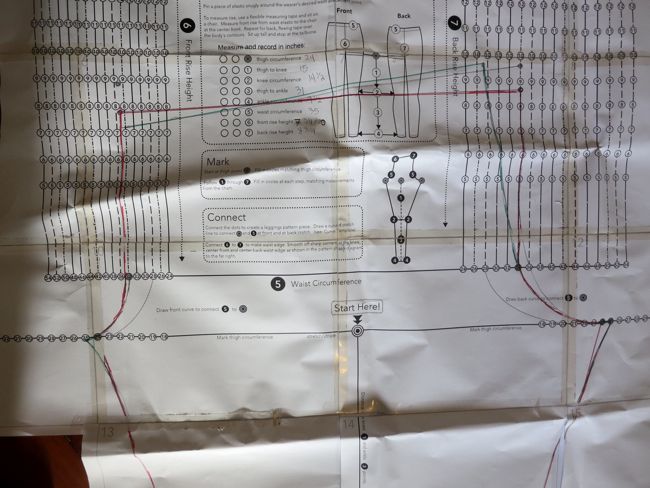
The reason my leggings were so much longer than my legs is because I have such skinny chicken calves – they are almost the same size as my knees and ankles, so the fabric didn’t shorten as it went out and around the calves. I know from friends who have made the same pattern that the if you have a lot of calves, you have the opposite problem: your leggings end up too short. I wouldn’t recommend shortening the pattern for your first trial, but if you do have very curvy calves, you may want to add a bit of extra length: it’s better to have to cut a bit off than to have too little.
If you do have skinny calves but thickish ankles, the bottom of the leggings may be too wide – just take them in, and make your pattern narrower at the bottom as I did.
Exactly how the legging pattern fits will also depend a great deal on how much horizontal and vertical stretch your fabric has. Very roughly, I’d suggest the pattern isn’t going to work well with less than 20% horizontal stretch (stretches from 10cm to at least 12cm), and it definitely needs a fabric with good recovery.
And, of course, as the pattern suggests, it’s always a good idea to do a trial run in what Steph of Cake calls ‘crummy’ fabric, but what I call ‘Not Gonna Cry’ fabric (hey, it can be really nice, but if you aren’t going to be bummed if it doesn’t work out, it doesn’t matter what you use it for!).
Some notes on printing to help you make your own pair:
– Print pages 1-5 as vertical PDFs.
– Print pages 6-29 as horizontal PDFs
– If your thigh circumference is less than 27″ you won’t need to print pages 23, 26, & 29 (the page #s as you read the PDF, not the #s that print on the pattern).
– If your thigh circumference is less than 20″, you won’t need to print pages 17, 20, 23, 26, & 29.
Since I made the leggings, I have worn them out and about. I wore them out bowling at a friends birthday party:
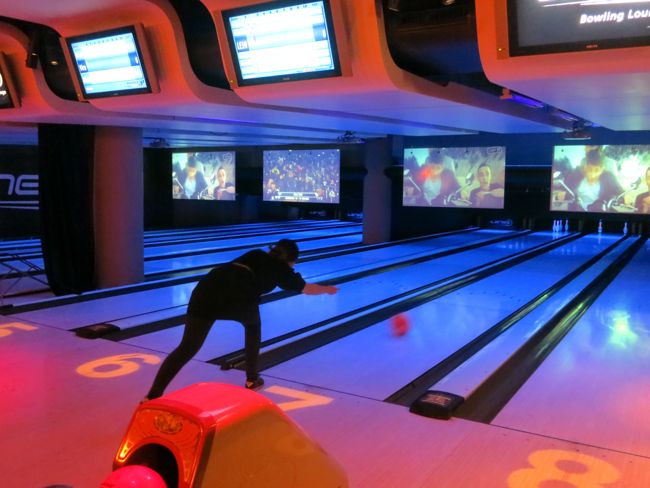
They did not ride up when I bent over, or sag down as I hurled balls down the lane (straight into the ditch) or pinch my stomach when we went to the Green Parrot afterwords and ate an American-sized dinner (so.much.food)…
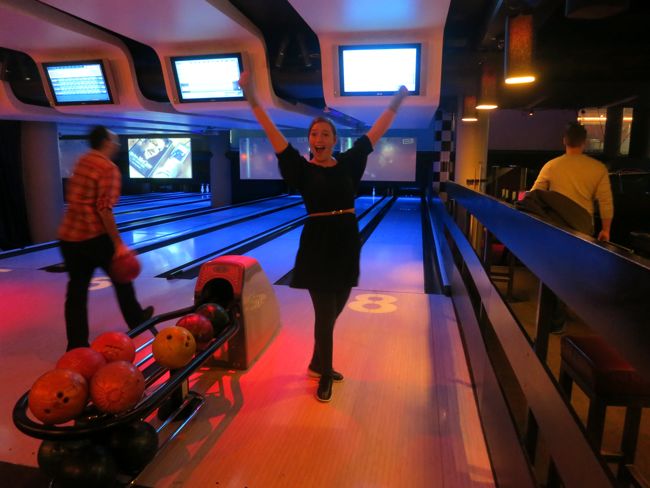 (this is me, being super excited that my ball actually hit a pin. I am a terrible bowler)
(this is me, being super excited that my ball actually hit a pin. I am a terrible bowler)
And when I came home? I did NOT take them off right away! I sat around all evening in my leggings, curled up on the couch working! For me, that’s a near miracle, and thus, the leggings can be declared an official unmitigated success!
Watch this space for more leggings, and winter dresses!

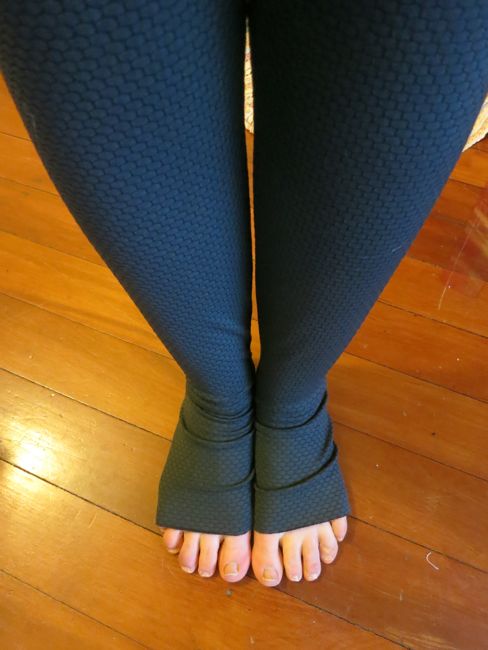
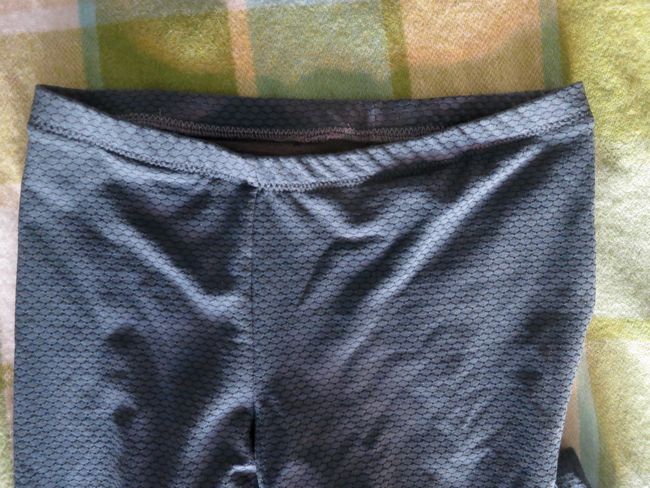
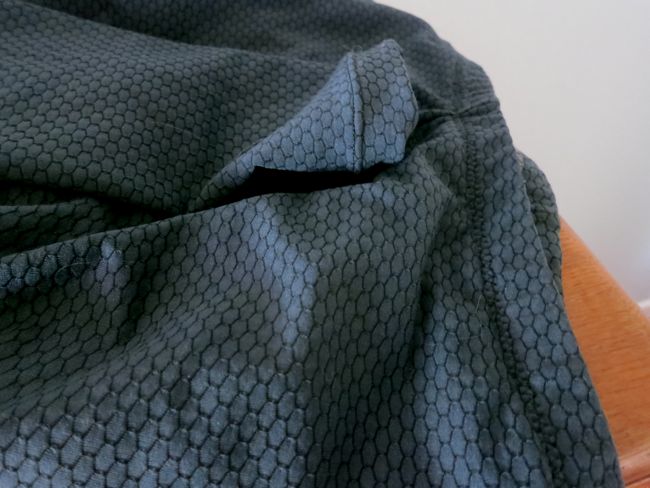
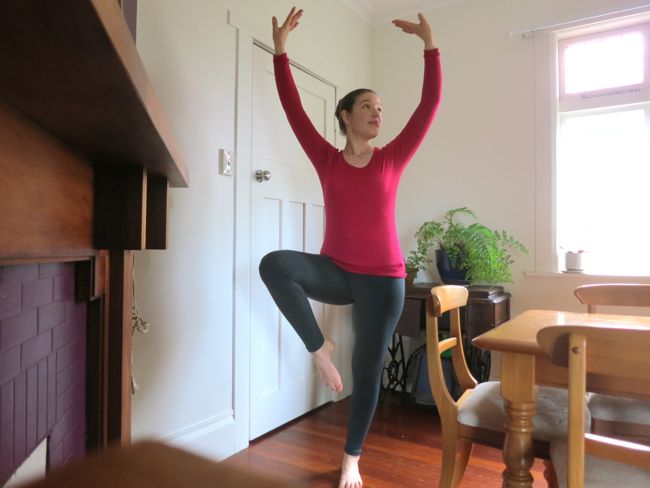
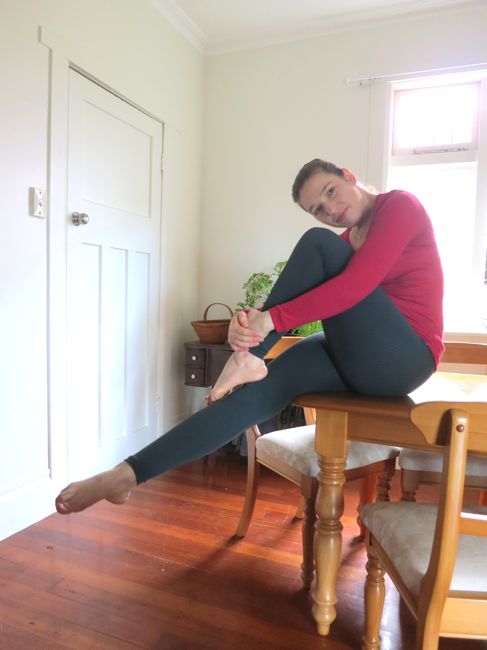
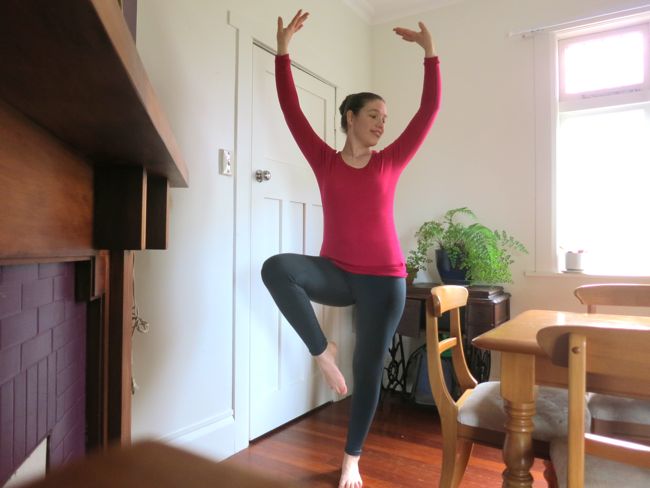

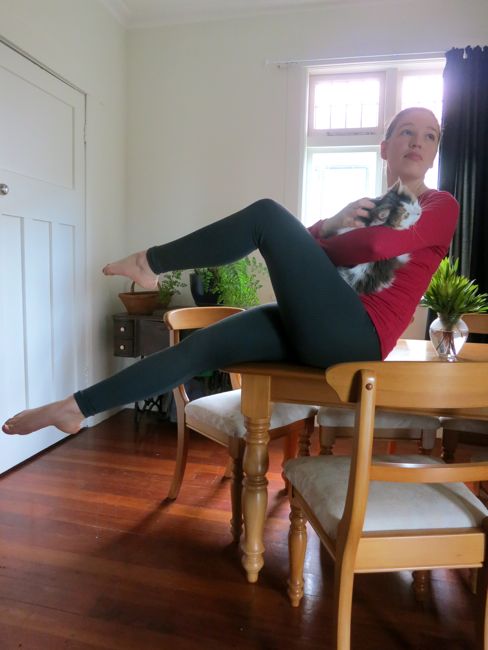


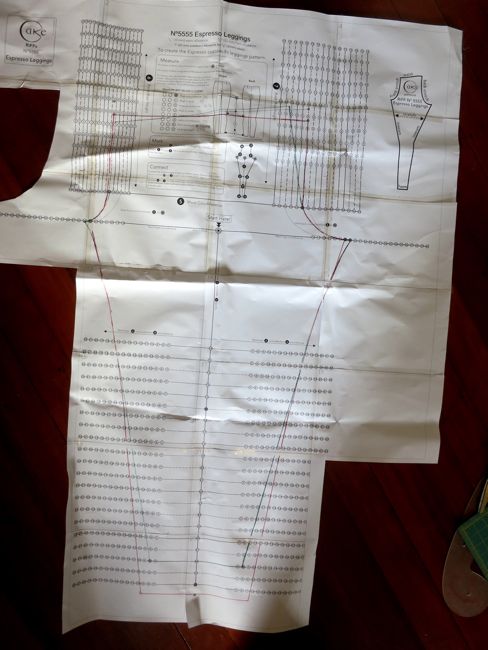
They are lovely looking leggings! Oh to have all merino cardigans! Its really hard to find in the UK. The espresso leggings seem really complicated to print. I used Megan Nielsen’s Virginia leggings for mine and they were a breeze to put together. I adore your fabric and I’m so pleased they suit your skin better!
Thanks Stevie! I went with the Cake pattern over the Virginia because I’m a very cerebral sewer, and the idea of semi-drafting a pattern really appealed to me. Teaching sewing, I also have a lot of students ask me about leggings patterns for non-standard figures, and the Espresso leggings are much more suited to that.
Merino is one of the major perks of sewing in NZ – so easy to find in every weight and colour, and so affordable!
I am the total opposite – I wear tights all the time and enjoy the colder seasons better just because of them. 🙂 The best ones are control top; they never sag or slide down or cut in, just give a nice support (and a flatter belly as a bonus). Togheter with a black, tight jersey dress they make the perfect outfit for home.
I’m afraid I find control top the worst! Perpetual tummy-ache from the pressure, plus the worst skin irritation from the synthetics.
Thanks for this write-up. I have the Espresso leggings pattern and fabric to make them up, but haven’t made them yet because of the measuring. (Also because there is stuff piled all over my cutting table, but we won’t talk about that)
These look so good on you! I think it’s time for me to make mine. It will get cold enough to wear them eventually.
Thanks Kathy! The measuring part is actually really easy – once I got past printing, measuring and connecting took me less than 15 minutes. And they are great leggings!
That’s really good information Leimomi, thank you. I might have to try them too, especially with your extra info about the generous bum/sway back adjustments as I have those too (plus the short legs for my height).
I need to finish the polonaise first cos it looks at me accusingly each time I use the machine for anything else and my ironing board is covered in polonaise too.
Hehe. I know all about projects looking at me accusingly! I try to alternate: real life, costuming, real life, costuming! And a quick easy project like leggings is good for making you feel that you actually accomplished something!
I like tights myself. I don’t know how to clothe my feet with leggings… especially since I wear a lot of flats. It’s exciting that you like yours, though, because hopefully it means you’ll also share dresses! I’ve been trying to wear more dresses, but winter ones are harder to be inspired by than summer ones, so I’m curious to see what you come up with!
Best,
Quinn
I like the idea of tights, but the don’t provide nearly enough coverage for my feet: I often go for triple layers of thick socks! I’m struggling with that for leggings, but will go for either boots with lots of socks, or try to start a new style for leggings with socks and shoes – a la the heels with socks that were ‘fashionable’ a few seasons ago!
For winter, I do a lot of wrap dresses, in prints if I can get them, or mixing shades of merino. And slim, straight T-shirt dresses in heavy merino.
They look just wonderful! Well done.
I especially love the model shot in which Felicity thinks you are crazy! 🙂
It’s about the fabric, the comfort. There used to be a wonderful fabric called wool-jersey (back when I was twenty-ish) that made great leggings and tops. Firmer than modern merino mixes, and with great recovery. I had a great pair of leggings (not then called leggings) in a subtle grey stripe.
Nice looking leggings, and thanks for warning us about the unsuspected pitfalls!
I do love Felicity’s expression in the third shot of you together–there’s such a clear “Save me and my precious dignity now” air in the way she holds her head.
Add me to the list of readers with merino envy.
Scrumptious fabric. Puts me in mind of a mermaid’s tail transforming into land-lover’s legs. Not quite fish scales, not yet epidermis.
Your review of the Espresso Leggings is so timely! Thank you! After being tempted all summer I finally ordered a bunch of merino jersey from the American branch of “The Fabric Store”(in LA). ( They will do mail order by phone…) I am hoping to try a couple of leggings patterns and Espresso is one of them. I am so happy to have the insights you offer! Glad they worked in the end for you! They look great!
Interesting.
I see many of the Nepali girls wearing the ‘toe hugging tights’ look in the winter – not sure if it serves a purpose (warmth, modesty?) or if they are so tiny all the cheap Chinese imported leggings they wear are just too long for them?
Readymade clothing is still a new & rather posh thing here in India & Nepal. Most clothing is still bespoke & tailor-made for ladies.
We do have quite an assortment of trouser (salwars) styles to choose from-
http://aminacreations.blogspot.com/2010/12/basic-types-of-salwars.html
I usually choose the churidhar, it is most like a legging with a long length that is scrunched up CAREFULLY around the ankle. With the churidhar’s generous length I don’t have to worry about leg length (I have a 33 inch inseam while most Indian women have a 28 inch inseam). Elastic waistbands (rather than the old drawstrings) as well as stretch material (with lycra or elastane) are new & exciting innovations here also.
Someone else following this blog from Nepal? Seriously?!? WE WILL TAKE OVER AND TALK NEPALI FASHION ENDLESSLY! Ha.
Churidhar … uh, had ’em rip on me more than once. Try sitting on the floor eating when all of a sudden, rrrRRRIIP. Another problem is that cotton isn’t a fabric with a lot of give, and churidhar have to basically give the impression that your legs are pencils, which means they tend to be tight around the knee area, which isn’t too comfortable even if the measurements work. Glamorous, yeah, but I’ll stick with the roomy Punjabi style salwars. (Although you need to have the kameez slit on the side for it to be “right,” so it’s a bit limiting.)
Or leggings. I live in leggings. They go with a lot of great styles of Nepali/Indian/Pakistani clothes, like tops (kurti) and some salwar, anarkali etc., depending on the look. Very convenient and comfortable. But I have to admit I stock up on leggings in the States. I have a few good ones I’ve gotten here — like at the Biba shop on Durbar Marg — but the average leggings at shops are cheap and thin.
All in all, though, we have the BEST clothes here. Way too much fun, on every corner.
Monsoon Rose,
Who knew Nepal was such an fashion forefront?
Because I’m a 5’10 gori I usually end up buying my clothes in Delhi or Mumbai.
I’ve found lots of places in Delhi & Mumbai that stock stretch cotton/lycra churidars & even stretch cotton/lycra/elastane salwars (like the dhoti salwars, & patialas)- even in sizes long enough for a firing like me. I like Biba, Pantaloons, & Lakshita for quality readymade ‘ethnic’ clothing in India. Funny isn’t it how they call the traditional clothing styles of India ‘ethnic’ in India?
Thanks for the tips! I just bought & downloaded the Espresso pattern. I’ve not sewn a lot with knits and couldn’t find much in the pattern on fabric type with regards to stretch and recovery. I’m especially confused by the bit that says the pattern is ‘calibrated for zero stretch’ in the vertical direction. I guess now is the time to break out the 4m of double-width white lycra I got for free (it’s amazing what you can find backstage after a concert sometimes!)
Nice find on the merino fabric by the way!
Cake does have lots on stretch and recovery, but you have to poke around a lot. ‘Calibrated for zero stretch’ means that it was designed for fabrics that don’t stretch at all when you pull down on them.
Hope that helps and good luck with them!